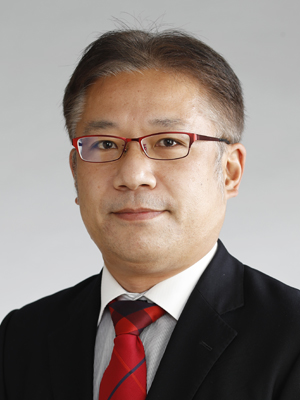Katsumi Yoshida
Nuclear Energy Division
- Position
- Professor
- TEL
- +81-3-5734-2960
- k-yoshidazc.iir.titech.ac.jp
- Researcher Link
- Web of Science | ORCID

Feature of Research
Ceramics have been recognized as attractive materials used in severe environment because they show excellent properties such as heat resistance, corrosion resistance, thermal stability and excellent wear resistance. Therefore, ceramics have been expected to be key materials for nuclear and fusion applications, environment and energy fields, and aerospace industries. In order to apply ceramic materials for these applications, their properties and functions corresponding to these applications must be improved in addition to their reliability as structural parts. Based on microstructure control in nano-, micro- and macro-scales, we have been developing high-performance advanced ceramic materials used in severe environment.
Outline of Research
- Development of Advanced Ceramic-Based Composites
Generally, ceramics show brittle fracture behavior, resulting in low reliability as structural parts. In order to improve their reliability, ceramics reinforced with continuous ceramic fibers, i.e. continuous ceramic fiber-reinforced ceramic matrix composites (CMCs) have been paid attention as next-generation highly reliable heat-resistant materials. CMCs have been expected to be used as the components for nuclear and fusion power applications, high temperature gas turbines and aerospace industries. Novel fabrication process of CMCs, their properties, and advanced ceramic-based composites with unique morphology have been studied.
- Development of High Performance Porous Ceramics
Application of porous ceramics has been considered to be effective to reduce environmental load and to save resources and energy. We have uniquely proposed porous ceramics with in-situ grain growth and grain orientation for the surface functionalization (Fig.2). We have been developing high-performance porous ceramics based on microstructure control in nano-, micro- and macro-scales. Furthermore, porous ceramics for purifying radioactively contaminated water and immobilizing radioactive nuclides have been studied.
- Development of Severe Environment Resistant Ceramics
Changes in properties and microstructure of ceramics exposed under severe environment such as high temperatures, high thermal gradient, corrosive and oxidizing atmosphere, radiation and particles irradiation have been studied, and we have been developing severe environment resistant ceramics. In consideration of nuclear and fusion applications, novel ceramics for accident tolerant fuels, high-performance neutron absorbing ceramic pellets for fast reactors, and inert ceramic matrix for the transmutation of long-lived fission products into short-lived or stable nuclides in nuclear reactors or accelerators, based on microstructure control, have been studied.
※Regarding the above research topics, our lab. has been studying the changes of properties, characteristics and microstructure of ceramics under neutron irradiation, corrosive environment (oxidation, high temperature water vapor, etc.) and the exposure at high temperatures.
Keyword
Ceramic-based composites, Severe environment resistant materials, High Performance Porous Ceramics, Nuclear and fusion reactor materials, Microstructure control, Ceramic processing

